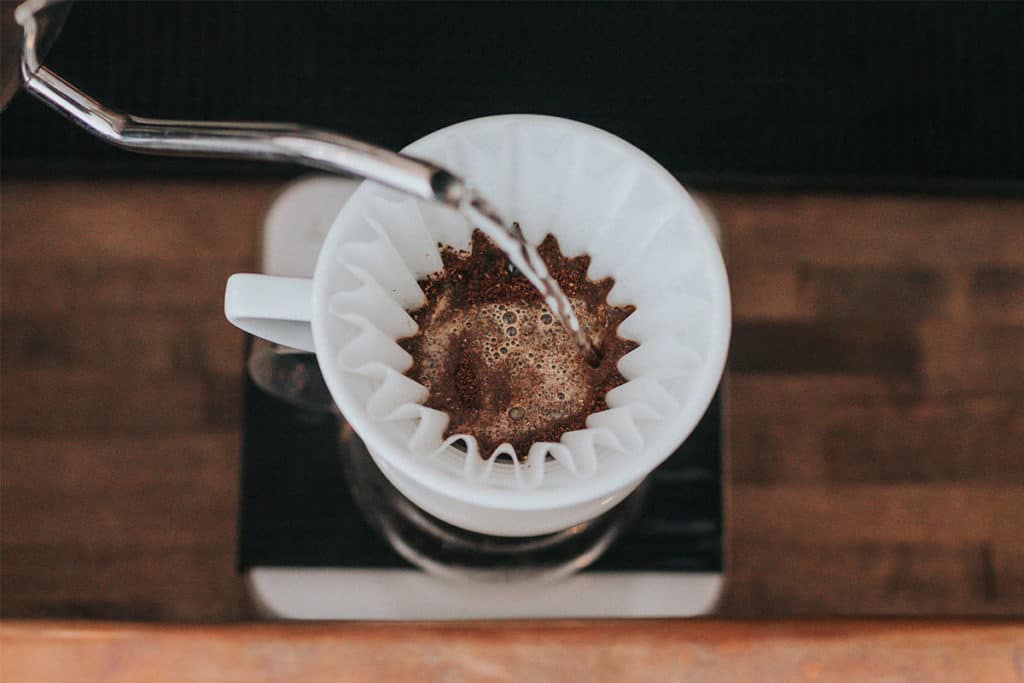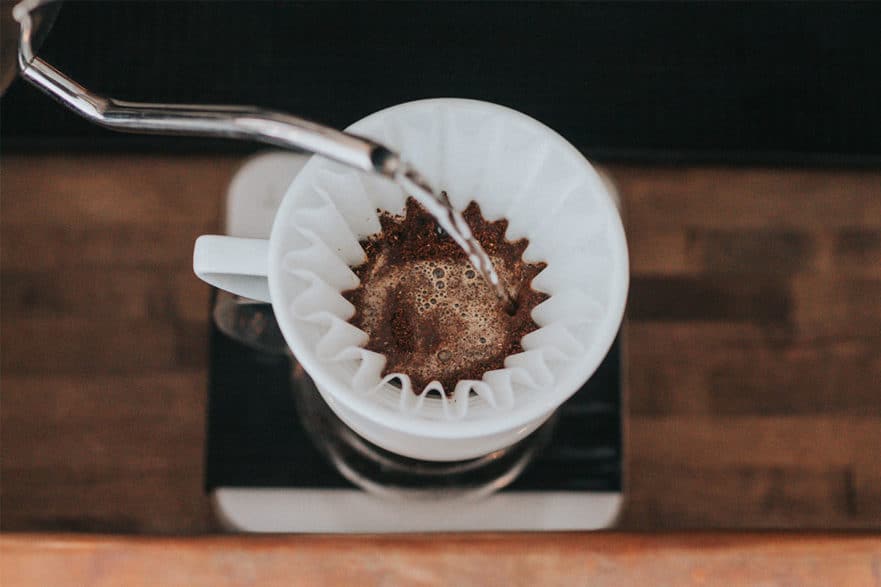
The best coffee to water ratio is subjective and depends on personal preference. However, a commonly accepted ratio is 1:15, meaning 1 gram of coffee to 15 grams of water. This ratio provides a good balance between extraction and dilution, resulting in a rich and flavorful cup of coffee.
Keep in mind that different coffee beans have different densities and roast levels, which can affect the final flavor profile. Experimenting with different ratios is the best way to find the perfect brew for your taste
Coffee to Water Ratio for Different Brewing Methods
As you may already know, the ratio you choose will greatly impact the taste of your coffee, making it either weak or bitter. Different brewing methods require different ratios, as the extraction process can vary. From pour over to French press, each method has its own ideal ratio for producing a rich and flavorful cup of coffee.
Let’s dive into the coffee to water ratio for different brewing methods, and provide tips on how to find the best ratio for your preferred brewing method.
Drip Coffee
Few things are more traditional when it comes to brewing coffee, then the automatic coffee maker. The Drip method is by far the most common methodology used, favored in diners and homes around the world.
The ideal ratio for this is 1:15 using a medium grind. The process is also fairly foolproof, given machines can be preprogramed and even have their own built in grinders to take out the guesswork.
Because so much of the process is automated, it allows the home brewer the ability to adjust coffee strengths and ratios to find the ideal cup.
French Press and Immersion Brewing
True coffee lovers tend to gravitate towards the French Press or Immersion technique for brewing coffee. Immersion brewing is the process of brewing the coffee directly in the water, or “immersing” it, while it is allowed to brew for a set amount of time.
Because the grounds are saturated for a predetermined amount of time without contact with anything else to inhibit flavor distribution- such as a filter- the true flavor is more pronounced.
The French press is the most popular type of this method (although the clever dripper is getting more popular), whereby the water is pressed out of the grounds, thus extracting the maximum, typically bolder, flavor.
The preferred ratio is once again 1:17, using coarse ground coffee, although purists who like their coffee stronger will aim for 1:15 or even 1:13.
Pour Over Method
Another relatively simple process that allows for ample experimentation at home, is the Pour Over method. Unlike the traditional Drip method, in this process, the brewer can control the flow and temperature of the water and how long it’s left to brew.
For the true coffee lover who really wants to experiment with water ratios, temperatures, and brewing times, this method allows for the most creativity to find the ideal taste profile. Like all methods, the ideal ratio is 1:17, using medium fine grind with stronger coffee brewed at a 1:15 ratio.
Cold Brew Coffee
The latest method to have become popular at home is Cold Brew. As the name suggests, the difference here is even though the process is still an Immersion brewing style, the water that is used is not heated.
This means in order for the flavor to be truly extracted it is a much longer brewing process, with the cold water poured directly over the grounds at room temperature, or better yet, in the refrigerator. The ratio for this process is much tighter, with a 1:7 or 1:5 for stronger coffee using a coarse grind.
Good Coffee Needs Good Water
Good water is essential to brewing a fine cup of coffee. If your water contains strong flavors or odors such as chlorine or Sulphur, it will be reflected in your coffee. Whenever possible, use filtered or bottled water to ensure that your coffee won’t suffer. If you are using water from the faucet, always let it run briefly before filling your coffee pot.
If you’re using tap water, let it run a few seconds before filling your coffee pot. Make sure to use cold water, and avoid distilled or softened water. When you heat your water, the sweet spot is 195-205 degrees. Any colder, and the coffee will lose its extraction ability and will take on a flat flavor.
Too hot, and the flavor will be lost, leaving with a burned, bitter profile. Always bring the water to a boil, and then remove it from the heat for 30 seconds before pouring over the grounds.
Using the Coffee to Water Ratio Calculator
To get an accurate coffee to water ratio you are going to need to use a coffee scale as I mentioned earlier. For best results try to use one that measures in grams, but if it doesn’t you can still use volume measurements.
To find the equivalents of different measurements, remember the following
- 1 milliliter is equal to 1 gram of water.
- 1 Tablespoon is equal to approximentely 5 – 7 grams of coffee
To put that into practice, lets say you want to go with ratio of 1 to 16 and you will measure in grams, you would the use 1 gram of coffee for every 16 grams of water. Therefore if you wanted to make a single cup of coffee, you would typically use 250g.
To find out how much coffee you will need (without using this handy calculator) then simply divide 250 / 16 and will find that you will need 15.625g grams of coffee.
Now lets look at the reverse.
Say you want to use 20 grams of coffee and you want to know how much water you will need for a 1:16 ratio. Simply multiply 16 x 20 and you get that you will need 320 grams of water.
It’s a Matter of Taste
No matter what methodology you decide to use to brew coffee at home, consistency is the key. The quality of the water you use for brewing is almost as important as the quality of the beans you settle on. Whenever possible, try to grind the beans as closely to brewing time as possible to ensure absolute freshness and peak flavor extraction.
Be mindful of the water’s temperature so you don’t scorch your coffee. Achieving the “Golden Ratio” of water to grounds is not always easy, but finding a consistent manner to achieve it will allow you to experiment to find your perfect


